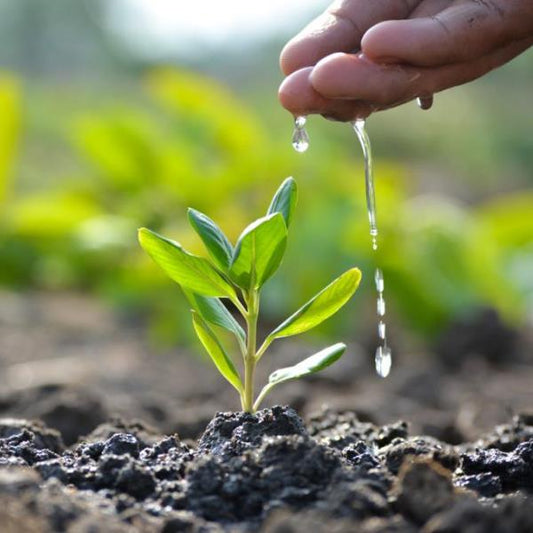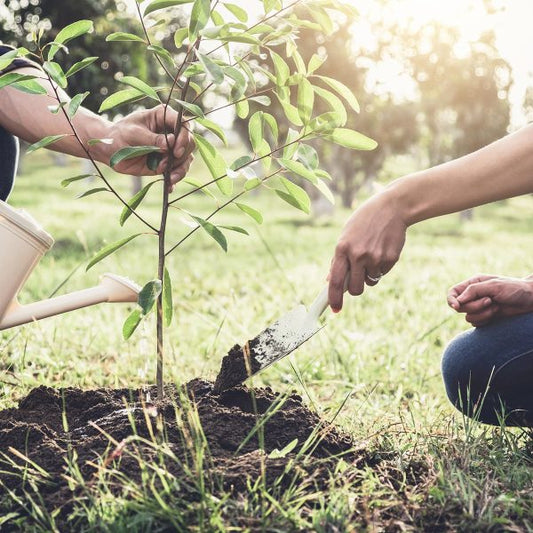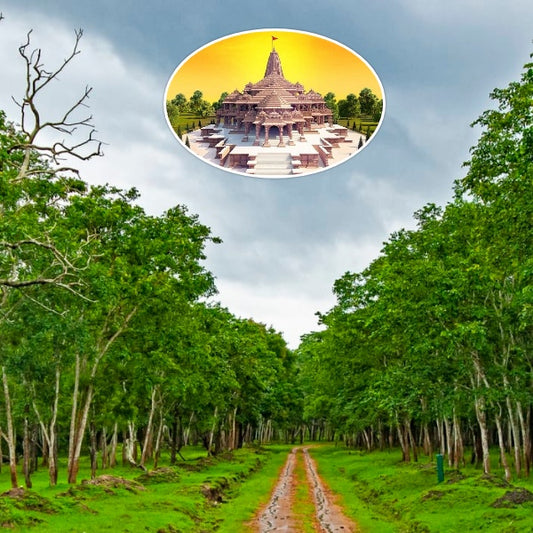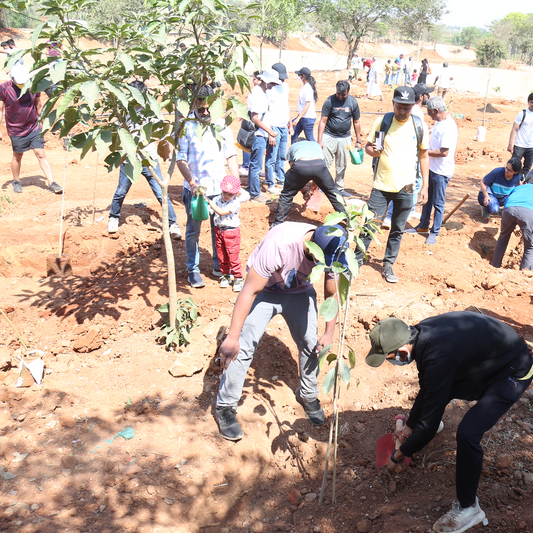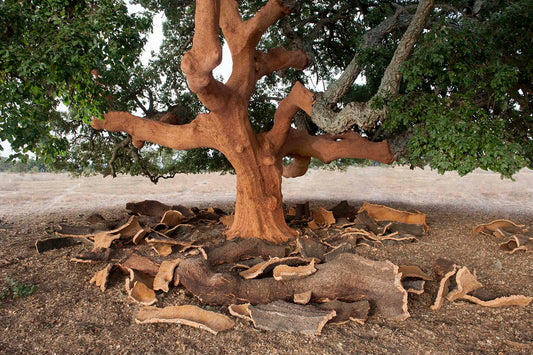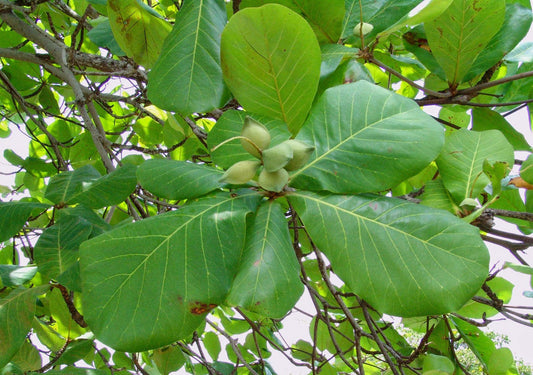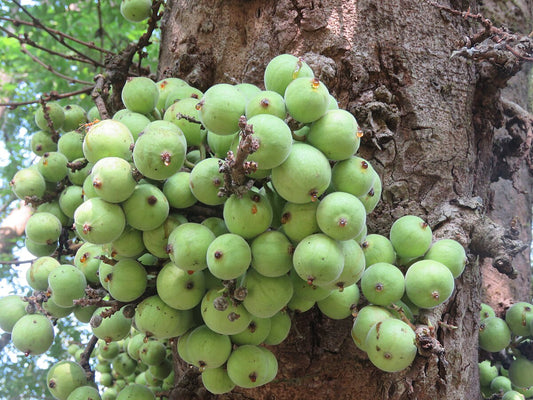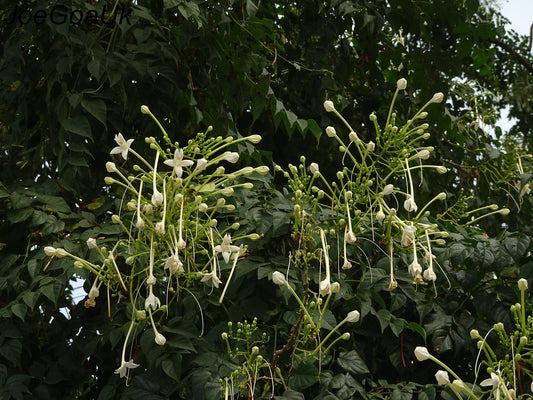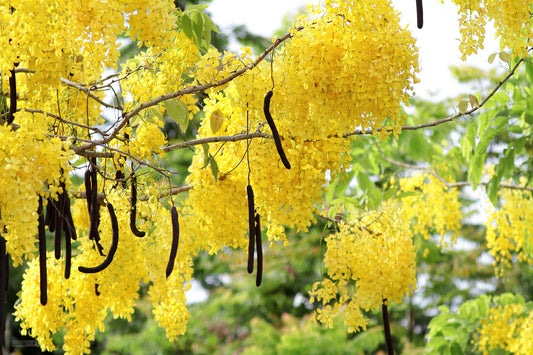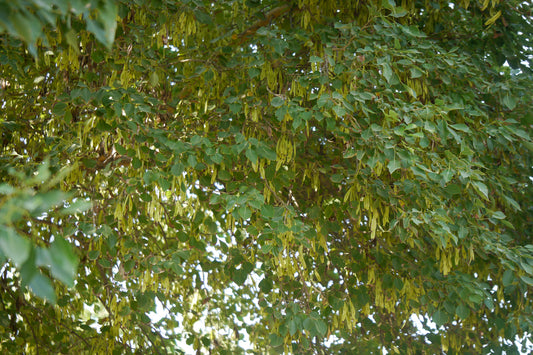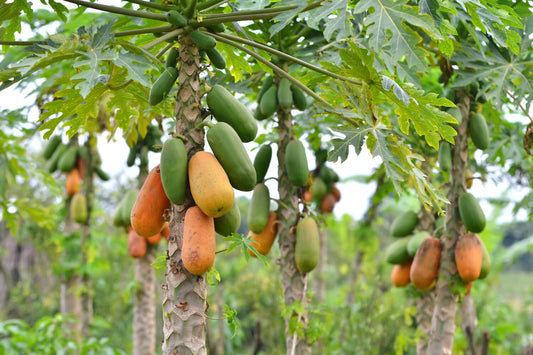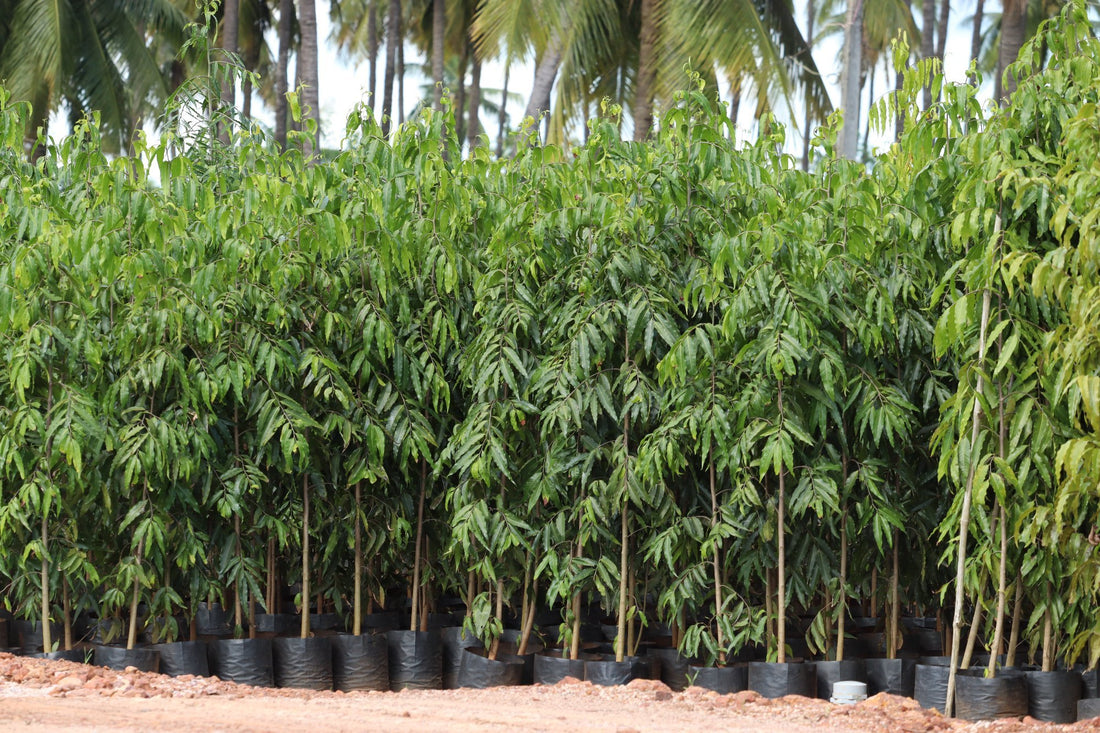

In the tranquil landscapes, the Ashoka Tree, scientifically known as Saraca asoca, graces the surroundings with its serene blossoms and cultural reverence. This elegant tree, adorned with clusters of fragrant flowers, not only enhances the natural beauty but also holds deep cultural sign Read more
Trending
Trees for Corporates
Ashoka Tree
You may also like
Corporate Plantations
Ashoka Tree Facts
Explore interesting facts about the Ashoka tree, celebrated for its elegant foliage, fragrant flowers, and cultural significance. Learn about its botanical name (Saraca asoca), native range in South Asia, and association with mythology, religion, and historical traditions.
Ashoka Tree Care
Discover essential care tips for growing and maintaining Ashoka trees in gardens, parks, and temple courtyards. From selecting suitable planting sites to providing adequate sunlight, water, and soil nutrients, learn how to ensure the health and beauty of these iconic flowering trees.
Ashoka Tree Pruning
Learn about the importance of pruning Ashoka trees to promote structural integrity, enhance flowering, and manage size and shape. Explore pruning techniques, timing, and safety precautions for maintaining healthy and attractive Ashoka specimens in urban and rural landscapes.
Ashoka Tree Flowering Season
Discover the flowering season of Ashoka trees and the factors influencing bloom timing and intensity. From environmental cues such as temperature and rainfall to tree age and health, various factors contribute to the profuse floral displays of Ashoka trees in spring and summer.
Ashoka Tree Medicinal Uses
Explore the medicinal properties of Ashoka bark, leaves, and flowers in Ayurvedic and traditional medicine. From treating gynecological disorders and menstrual problems to promoting wound healing and reducing inflammation, Ashoka has been valued for its therapeutic benefits for centuries.
Ashoka Tree Symbolism
Delve into the cultural symbolism of the Ashoka tree in Hindu mythology, religious ceremonies, and artistic expression. Revered for its association with love, fertility, and prosperity, the Ashoka tree symbolizes beauty, resilience, and spiritual enlightenment in Indian culture and traditions.
Ashoka Tree Habitat
Learn about the natural habitat of Ashoka trees, including tropical and subtropical regions with well-drained soil and humid climates. From forested hillsides to riparian zones along rivers and streams, Ashoka trees thrive in diverse ecosystems, providing shade, shelter, and food for wildlife.
Ashoka Tree Conservation
Discover conservation efforts aimed at protecting Ashoka trees and their forest habitats from threats such as deforestation, habitat degradation, and climate change. Learn about initiatives focused on habitat restoration, community engagement, and sustainable land management to ensure the long-term survival of these iconic trees.
Ashoka Tree Leaf Characteristics
Explore the distinctive characteristics of Ashoka leaves, including their glossy texture, oblong shape, and dark green color. With adaptations for reducing water loss and enhancing photosynthesis, Ashoka leaves are well-suited to tropical environments with high humidity and rainfall.
Ashoka Tree Root System
Learn about the root system of Ashoka trees and its role in anchoring the tree, accessing water and nutrients, and stabilizing soil. With fibrous roots and root hairs, Ashoka trees form symbiotic relationships with soil microorganisms, enhancing nutrient uptake and soil fertility in their habitat.
Ashoka Tree Drought Tolerance
Discover the drought tolerance mechanisms of Ashoka trees and their ability to withstand water stress in dry periods. With adaptations such as deep root systems, water storage tissues, and reduced transpiration rates, Ashoka trees can survive and thrive in arid and semi-arid climates.
Ashoka Tree Flower Anatomy
Explore the anatomy of Ashoka flowers, including their clusters of small, fragrant blossoms and prominent stamens. With vibrant colors and sweet fragrance, Ashoka flowers attract pollinators such as bees, butterflies, and birds, facilitating cross-pollination and seed production in these trees.
Ashoka Tree Soil Requirements
Learn about the soil requirements for growing Ashoka trees and optimizing their health and growth in tropical landscapes. From well-drained, loamy soils to sandy or clayey substrates with good aeration and moisture retention, Ashoka trees thrive in diverse soil types found in their native habitats.
Ashoka Tree Pest and Disease Management
Discover common pests and diseases that affect Ashoka trees and strategies for prevention and control. From fungal pathogens and leaf-chewing insects to root rot and wilt diseases, proactive management practices can help minimize the impact of pests and diseases on tree health and productivity.
Ashoka Tree Root Pruning
Learn about root pruning techniques for Ashoka trees to address root-related issues and promote tree health and stability in urban environments. From removing circling roots and girdling roots to improving soil structure and drainage, root pruning can enhance the vigor and longevity of Ashoka trees in urban landscapes.
Ashoka Tree Landscape Design
Explore creative ideas for incorporating Ashoka trees into landscape designs, gardens, and public spaces. From focal points and shade trees to wildlife habitats and cultural heritage sites, Ashoka trees offer aesthetic, ecological, and cultural benefits in diverse settings.
Ashoka Tree Timber Uses
Learn about the traditional and cultural uses of Ashoka wood in carving, sculpture, and religious artifacts. Despite its relatively small size and limited commercial value, Ashoka wood is prized for its fine grain, smooth texture, and symbolic significance in art and craftsmanship.
Ashoka Tree Growth Rate
Gain insights into the growth rate and development of Ashoka trees under optimal growing conditions. With moderate growth rates, Ashoka trees can attain mature heights and spread within a few decades, providing shade, beauty, and cultural value in tropical landscapes.
Ashoka Tree Historical Significance
Explore the historical significance of Ashoka trees in ancient civilizations, religious rituals, and cultural traditions. From their mention in ancient texts and inscriptions to their depiction in art and architecture, Ashoka trees have played a prominent role in shaping human societies and landscapes over millennia.
Ashoka Tree Wildlife Habitat
Discover the importance of Ashoka trees as habitat and food sources for wildlife in tropical ecosystems. From birds and insects to mammals and reptiles, Ashoka trees support a diverse array of species, contributing to biodiversity conservation and ecological balance in their native habitats.
FAQ
What is an Ashoka tree?
The Ashoka tree, scientifically known as Saraca asoca, is a beautiful, evergreen tree native to the Indian subcontinent. Revered for its ornamental value and cultural significance, the Ashoka tree is cherished for its graceful form, fragrant flowers, and historical associations.
Where are Ashoka trees commonly found?
Ashoka trees are commonly found throughout the Indian subcontinent, including India, Nepal, Sri Lanka, and Bangladesh. They thrive in tropical and subtropical climates and are often cultivated in gardens, parks, and temple courtyards for their aesthetic beauty and religious significance.
What are the characteristics of Ashoka trees?
Ashoka trees are characterized by their dense, spreading canopy, dark green foliage, and clusters of bright orange to deep red flowers. They produce compound leaves with numerous leaflets and small, round fruits that turn black when ripe.
How tall do Ashoka trees grow?
Ashoka trees can grow up to 15-20 meters (50-65 feet) tall in favorable growing conditions. They have a relatively fast growth rate and develop a broad, umbrella-shaped crown with age, providing ample shade and beauty to the landscape.
What is the scientific name of the Ashoka tree?
The scientific name of the Ashoka tree is Saraca asoca, belonging to the family Fabaceae. The species name "asoca" is derived from the Sanskrit word "ashoka," meaning sorrowless or without grief, reflecting the tree's association with love, fertility, and prosperity.
When do Ashoka trees bloom?
Ashoka trees typically bloom in late winter to early spring, although flowering times may vary depending on the climate and growing conditions. The flowers are small, fragrant, and arranged in dense clusters, attracting pollinators such as bees and butterflies.
How to care for Ashoka trees?
To care for Ashoka trees, plant them in well-drained soil in a location with full sunlight or partial shade. Provide regular watering, especially during dry periods, and mulch around the base of the tree to retain moisture and suppress weeds. Prune as needed to remove dead or diseased branches and promote healthy growth.
What are the benefits of planting Ashoka trees?
Planting Ashoka trees offers several benefits, including providing shade, enhancing landscape aesthetics, and attracting pollinators. They are also valued for their cultural significance in Hindu mythology and traditional medicine, where various parts of the tree are used for religious rituals and medicinal purposes.
Are Ashoka trees suitable for urban environments?
Yes, Ashoka trees are well-suited for urban environments due to their tolerance of pollution and adaptable nature. They are often planted along streets, in parks, and around public buildings, where their vibrant flowers and evergreen foliage add color and beauty to urban landscapes.
How to propagate Ashoka trees?
Ashoka trees can be propagated from seeds or cuttings. Collect mature seeds from the tree during the fruiting season and sow them in containers filled with well-draining potting mix. Alternatively, take semi-hardwood cuttings from healthy, mature trees and root them in a rooting hormone solution.
What are the common pests and diseases affecting Ashoka trees?
Common pests affecting Ashoka trees include aphids, scale insects, and caterpillars, while diseases such as powdery mildew and leaf spot can also occur. Regular monitoring, proper sanitation, and timely application of insecticides or fungicides can help manage these issues effectively.
Can Ashoka trees tolerate drought?
Ashoka trees have moderate drought tolerance once established but benefit from regular watering during dry periods, especially in hot summer months. Mulching around the base of the tree helps retain soil moisture and regulate soil temperature, promoting healthy growth.
How long does it take for an Ashoka tree to mature?
It typically takes several years for an Ashoka tree to reach full maturity and attain its maximum height and canopy spread. However, they are relatively fast-growing compared to other ornamental trees and can provide significant shade and beauty within a relatively short time frame.
Are Ashoka trees deciduous?
No, Ashoka trees are evergreen, meaning they retain their foliage year-round. Their dark green leaves provide color and texture to the landscape throughout the year, making them valuable ornamental trees in both residential and commercial settings.
Can Ashoka trees be grown in pots?
Yes, Ashoka trees can be grown in pots when they are young, but they require a large container with sufficient space for root development. Use a well-draining potting mix and provide regular watering and fertilization to support healthy growth. Transplant to a larger container or into the ground as the tree grows.
What is the significance of Ashoka trees in landscaping?
Ashoka trees are prized in landscaping for their graceful form, vibrant flowers, and cultural significance. They are often used as specimen trees, focal points, or hedge plants in gardens, parks, and temple complexes, where their presence adds beauty and symbolism to the surroundings.
Are Ashoka trees invasive?
Ashoka trees are not considered invasive in most regions, although they may self-seed and naturalize in favorable environments. Their relatively slow growth rate and limited seed dispersal mechanisms reduce the likelihood of widespread invasion, but caution should be exercised in regions with sensitive ecosystems.
How do you prune an Ashoka tree?
Prune Ashoka trees in late winter or early spring to remove dead or diseased branches, improve air circulation, and maintain shape. Use clean, sharp pruning tools and make cuts just outside the branch collar to promote rapid healing and minimize the risk of infection.
What is the lifespan of an Ashoka tree?
The lifespan of an Ashoka tree can vary depending on growing conditions, species, and management practices. In optimal conditions, Ashoka trees can live for several decades to over a century, with some specimens recorded to be over 200 years old. Providing proper care and maintenance can help prolong their lifespan and ensure their longevity in the landscape.
Are Ashoka trees protected species?
Ashoka trees are not listed as protected species in most regions, although they may be subject to conservation efforts in their native range. Sustainable forestry practices and habitat preservation initiatives help ensure the continued existence of Ashoka trees and their ecological importance in tropical and subtropical ecosystems.
Most Popular
Connect with us
-
👥 Corporates
If you are looking for:
- 🌲 Tree Plantation Events
- 📊 CSR Projects
📧 corporate@growbilliontrees.com
📞 +91 9699723523
💬 WhatsApp (Only): +91 9370599291
🕒 Mon - Sat | 10am - 7pm IST
-
🧩 Tree Plantation NGOs
If you are looking for:
- 💰 Financial Assistance
- 🤝 Operational Support
📧 support@growbilliontrees.com
📞 +91 9699723523
💬 WhatsApp (Only): +91 9370599291
🕒 Mon - Sat | 10am - 7pm IST
-
🌼 Individuals
If you are looking for:
- 👥 Group Tree Plantation Drive
- 🌳 Bulk Tree Plantation
📞 +91 9699723523
💬 WhatsApp (Only): +91 9370599291
🕒 Mon - Sat | 10am - 7pm IST



